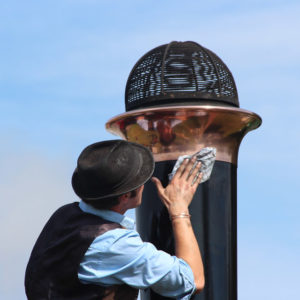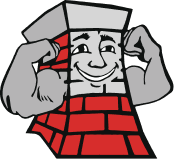Tips for Greater Fireplace Efficiency
As pleasant as it is to enjoy a warm fire, the percentage of homes which depend upon a fireplace or wood stove to heat their home went from 90% in the early 20th century to about 1% today, according to the U.S. Department of Energy. Modern advances in equipment as well as a greater interest in using environmentally friendly heat sources are bringing back the viability and popularity of fireplaces and wood stoves.
It’s true that heat produced by a fireplace can help offset the more expensive heat sources produced by oil, propane, and gas. But the reality is that if a fireplace isn’t used efficiently, more heat can go up the chimney and draw cold air into the home. If you want to save on the cost of heating fuel with the use of a fireplace or woodstove, there are some steps you can take to make that happen.
Dampers
Since the chimney is an opening which can bring outdoor elements into your home, dampers are important. A damper is the hinged metal plate just above the chimney’s throat which controls the flow of air and smoke both through the fireplace and up the chimney. When your chimney isn’t in use, close the damper. While dampers usually seal well when they’re new, they often warp over time and allow more air to pass through. It’s helpful to have a chimney cap damper, too, which closes at the top of the chimney and reduces the amount of air that can enter the flue. Using both dampers will do a better job of helping you to reduce costs of both heating and cooling your home by raising fireplace efficiency.
Fireplace inserts
A wood-burning fireplace insert is an appliance that’s specifically designed to improve the efficiency of a fireplace. The insert, which is heavy steel or cast iron, is placed inside the masonry fireplace box; and the front usually has insulated glass which allows you to watch the fire. The closed chamber acts as a combustion chamber in which to burn the wood. The heat is trapped inside the cast iron or steel box, and it radiates into your home.
Installing a fireplace insert is sure to increase your fireplace efficiency 10 fold.
Seasoned Hardwood
The type of wood that you burn in your fireplace makes a big difference in how much heat is produced. The more smoke that goes up your chimney, the more energy is wasted. So when you burn fuel that produces less smoke, that’s your assurance that you’re burning the right type of firewood.
Whatever kind of wood you burn, be it hardwood or softwood, it’s essential that it’s seasoned, if you want to burn efficiently. Seasoned firewood is another way of saying dried firewood. When a tree is cut down, it has a high level of moisture. It takes between six months to a year in the right conditions for the moisture in firewood to dissipate.
Seasoned hardwood will produce a lot more heat than softwood. Hardwood burns hotter and longer, which means more heat enters your home to offset the need for other heat sources.
Cleaning and inspection

Hiring a professional chimney sweep to clean your chimney can dramatically incrase the efficiency of your fireplace.
Hire a professional chimney sweep to clean and inspect your chimney annually. A certified professional can remove creosote and identify whether there are any cracks in the flue lining. If there is a crack, heat escapes and can cause a house fire.
Cleaning helps to improve fireplace efficiency. Besides removing ash from the bottom pan, clean soot from the inside. According to the U.S. Department of Energy, the heat-transfer efficiency of your fireplace can be lowered by as much as 50% if you have just one-tenth of an inch of soot layered inside the fireplace!
When the use of fireplaces was largely displaced by more convenient heating methods, the point was proven that modern progress is not always best. Using wood-burning appliances to heat your home is cost effective and much better for the environment. To find out if a fireplace or woodstove is best for your home, give the professional chimney sweeps at Northeastern Chimney a call!
Northeastern Chimney, Inc
37 Cody Street, West Hartford, CT 06110
Phone: 860-233-5770




